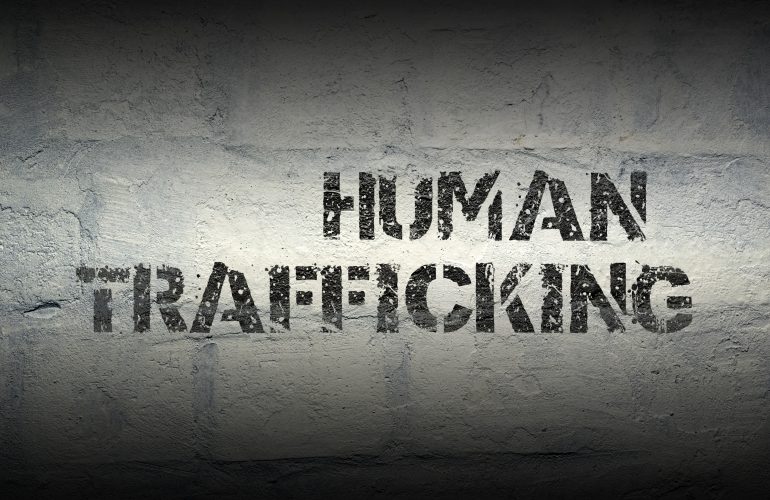Many commodities are trafficked around the world and throughout the United States. Drugs and weapons are heavily trafficked and have been for centuries. Another “product” being sold throughout time are people, mainly women and young children. They are sold to be used as prostitutes and sex slaves, cheap labor, domestic servants, agricultural and farm help, and factory workers. You may live in a neighborhood, shop at stores, eat at restaurants, or frequent nail salons where people are enslaved, tortured or killed. On the freeway, you may pass unmarked vans or semi-trucks filled with slaves being trafficked across the United States.
Looking for Easy, Online CEUs?
Find Human Trafficking CEUs and many other subjects to fulfill your CE requirements. Click here for Human Trafficking CEUs
What is Human Trafficking?
A good definition of human trafficking comes from Nita Belles. She states that “Human trafficking is the recruitment, harboring, transporting, obtaining, or maintaining of a person by means of force, fraud, or coercion for the purposes of involuntary servitude, debt bondage, slavery or a commercial sex act in which the person performing the act in under eighteen years old” (2015).
Statistics
- Over 27 million people are currently enslaved around the world
- 80% of all trafficked people are female
- 50% are children
- 70% of females are trafficked for commercial sex
- Between 240,000 and 325,000 American children are at risk
- Each year, there are 200,000 incidents of sexual exploitation of minors
- Each year, human trafficking brings in $150 billion dollars in the US alone
- $99 billion of that is from sex trafficking
- Each year, between 14,500 and 17,500 people are trafficked into the US from other countries
- 45,000 American children run away annually
- The average age for sex trafficked girls is between 12 to 14 and for boys, 11 to 13
Identifying Types of Human Trafficking
Human trafficking may be a politically correct way of saying “Modern Slavery”. People are trafficked for numerous types of work and sexual exploitation. One important fact to always remember – the trafficker is usually not far from their slaves. You may see a person who you suspect is being trafficked. Notify the authorities as soon as you can, and never intervene on your own. Many traffickers are sex industry pimps or managers, but they can also be friends, family or romantic partners. They might even be US or International government employees, such as Diplomats. They can also be legitimate employers.
The following industries may use trafficked persons:
- Sex work (massage parlors)
- Domestic labor (housekeepers and nannies)
- Agricultural work (fruit pickers, gardeners)
- Restaurant work
- Construction
- Debt bondage
- Factor labor
- Commercial sex (prostitutes)
- Laundries
- Sweatshops
- Hospitality (hotels, tourist industry)
- Street beggars
- Janitorial services
- Fishing industry
- Logging industry
Risk Factors for Becoming Trafficked
Generally speaking, the most vulnerable people in society are at a higher risk for being trafficked. The desperate, uneducated, and poor immigrants are trafficked at higher rates. Women and children are vulnerable to traffickers. Vulnerable people may be looking for a better life, but lack financial resources and economic opportunities. They may have unstable home lives, live in abusive environments, and some have a history of sexual and physical abuse.
Unfortunately, almost anyone can be at risk. Health care professionals and law enforcement should be educated about human trafficking and know who and what to look for in their communities. Social injustices may push people into the arms of a trafficker, including racism, sexism, and homo- and transphobia. Individuals who are heavily engaged in pimp culture, the over-sexualization of women and violence against women may be at a high risk for being trafficked. People who don’t trust law enforcement or the legal system in general, may also be at a high risk for being trafficked.
Other risk factors include emotional distress, homelessness, poverty, mental illness, substance abuse, lack of social support, and childhood sexual abuse. Language barriers can prevent trafficked persons from communicating with authorities or health care professionals. Being in a gang is a risk. Poor attendance at school, a history of truancy, delinquency and criminal activity are all risk factors.
Final Words
Human trafficking and slavery has taken place around the world for thousands of years. It is believed that there are more slaves today than in all of history combined. This problem is not only overseas, it is probably in your state, city, or neighborhood. It is important to learn about human trafficking. There are various types of trafficking taking place right under our noses. Now that you know a little more about human trafficking, what can you do to help?
More About Human Trafficking:
Human Trafficking: Support and Care
Human Trafficking: Physical Health Consequences
Human Trafficking & Mental Health
Looking for Easy, Online CEUs?
Find Human Trafficking CEUs and many other subjects to fulfill your CE requirements. Click here for Human Trafficking CEUs

